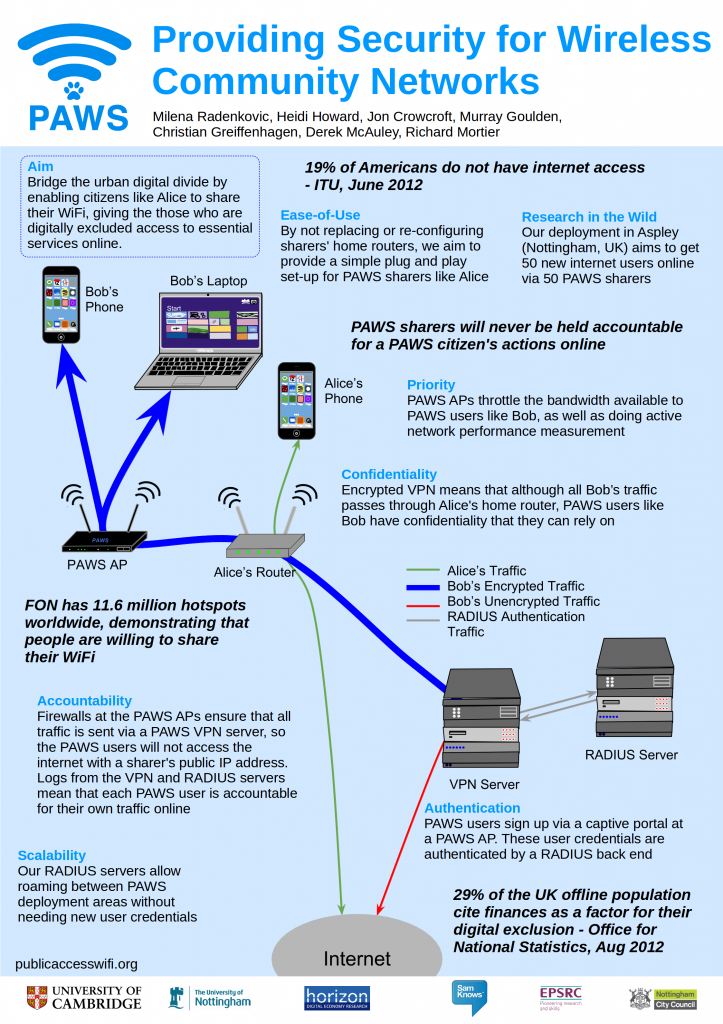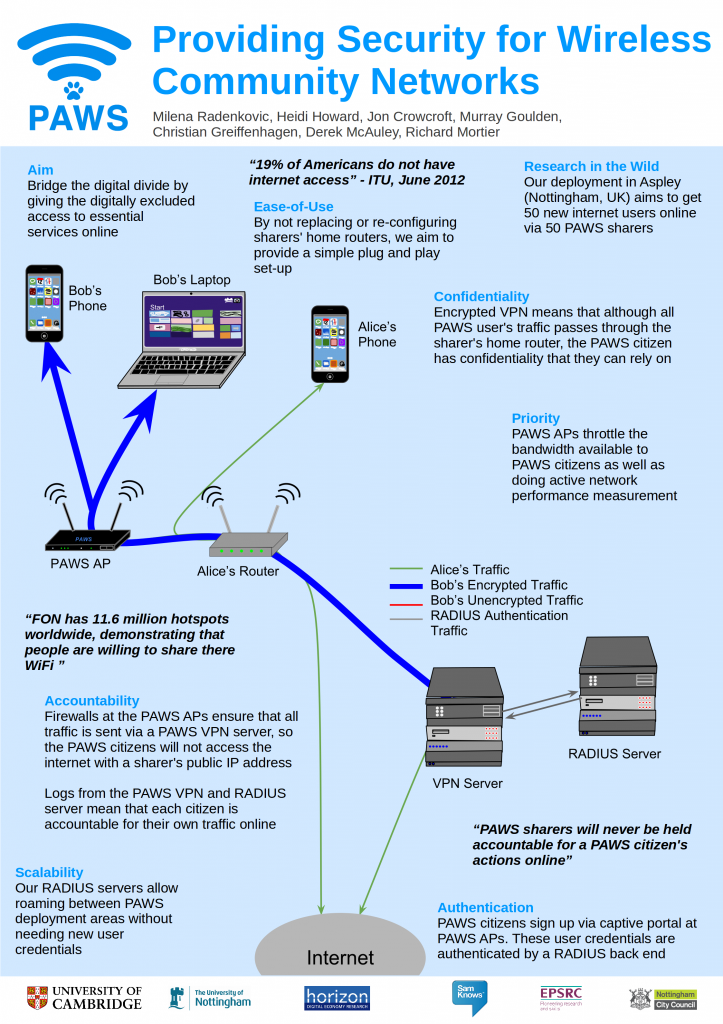The following is the first part in a step-by-step guide to setting up your own DNS resolver using MirageOS. I will be running this on a low power, low cost ARM device called the Cubieboard 2. Up to date code for each version of the DNS resolver is on Github. This guide assumes some basic experience of lwt and MirageOS, up to the level of the Hello World Tutorial.
Feedback on this article and pull requests to the demo code are welcome.
Part 1.1 – Setting up the cubieboard with MirageOS
Plenty of information on setting up a cubieboard with Xen and MirageOS is available elsewhere, most notability:
For debugging I am a big fan for wireshark. I run a full wireshark sesson on the machine which is connection sharing to my cubieboard network, to check all external traffic.
For this guide, I will always be compiling for Xen ARM backend, with direct network connection via br0 and a static IP for all unikernels. My test network router is configured to give out static IP of the form 192.168.1.x to hosts with the MAC address 00:00:00:00:00:0x. As a result, my config.ml file look like:
open Mirage
let ip_config:ipv4_config = {
address= Ipaddr.V4.make 192 168 1 2;
netmask= Ipaddr.V4.make 255 255 255 0;
gateways= [Ipaddr.V4.make 192 168 1 1];
}
let client =
foreign "Unikernel.Client" @@ console @-> stackv4 @-> job
let () =
add_to_ocamlfind_libraries [ "dns.mirage"; ];
register "dns-client"
[ client $ default_console $ direct_stackv4_with_static_ipv4 default_console tap0 ip_config]
Since the IP address of the unikernel is 192.168.1.2, before launching the unikernel, I do:
echo "vif = [ 'mac=00:00:00:00:00:02,bridge=br0' ]" >> dns-client.xl
I build unikernel using the usual commands:
mirage configure --xen
make depend; make; make run
# edit file.xl
sudo xl create -c file.xl
Part 1.2 – Getting Started
The following is the complete code for a unikernel which queries a DNS server for a DNS domain and prints to console the IP address returned.
open Lwt
open V1_LWT
let domain = "google.com"
let server = Ipaddr.V4.make 8 8 8 8
module Client (C:CONSOLE) (S:STACKV4) = struct
module U = S.UDPV4
module DNS = Dns_resolver_mirage.Make(OS.Time)(S)
let start c s =
let t = DNS.create s in
OS.Time.sleep 2.0
>>= fun () ->
C.log_s c ("Resolving " ^ domain)
>>= fun () ->
DNS.gethostbyname t ~server domain
>>= fun rl ->
Lwt_list.iter_s
(fun r ->
C.log_s c ("Answer " ^ (Ipaddr.to_string r))
) rl
end
This unikernel will query a DNS server at 8.8.8.8 (google public DNS resolver) for a domain google.com. Here we are using the simple function, DNS.gethostbyname, with the following type sig:
val gethostbyname : t ->
?server:Ipaddr.V4.t -> ?dns_port:int ->
?q_class:Dns.Packet.q_class ->
?q_type:Dns.Packet.q_type ->
string -> Ipaddr.t list Lwt.t
This returns a list of IP’s, which we then iterative over with Lwt_list.iter_s and print to the console.
Part 1.3 – Boot time parameters
Hardcoding the server and domain is far from ideal, instead we will provide them at boot time with Bootvar, the interface for bootvar is below:
type t
(* read boot parameter line and store in assoc list - expected format is "key1=val1 key2=val2" *)
val create: unit -> t Lwt.t
(* get boot parameter *)
val get: t -> string -> string option
(* get boot parameter, throws Not Found exception *)
val get_exn: t -> string -> string
We can now use this to provide domain and server at boot time instead of compile time
let start c s =
Bootvar.create () >>= fun bootvar ->
let domain = Bootvar.get_exn bootvar "domain" in
let server = Ipaddr.V4.of_string_exn (Bootvar.get_exn bootvar "server") in
...
Part 1.4 – Using Resolve
Now, a real DNS resolver will need to make many more parameters (any DNS query) and return full DNS responses not just IP address. Thus we need to move on from DNS.hostbyname to using the less abstract resolve function, resolve:
val resolve :
(module Dns.Protocol.CLIENT) ->
t -> Ipaddr.V4.t -> int ->
Dns.Packet.q_class ->
Dns.Packet.q_type ->
Dns.Name.domain_name ->
Dns.Packet.t Lwt.t
We can achieve same result of hostbyname as follows:
...
DNS.resolve (module Dns.Protocol.Client) t server 53 Q_IN Q_A (string_to_domain_name domain)
>>= fun r ->
let ips =
List.fold_left (fun a x ->
match x.rdata with
| A ip -> (Ipaddr.V4 ip) :: a
| _ -> a ) [] r.answers in
...
We are now explicit about parameters such as port, class and type. Note that we have opened the Dns.Name and Dns.Packet.t modules. The return value of resolve is a Dns.Packet.t, we fold over answers in the produce an IPaddr.V4 list as with hostbyname. We can also use the to_string function in Packet to print
I’ve taken a break to do some refactoring work on the ocaml-dns library. In the next post, Part 2, we will expand our code to a DNS stub resolver.
 Most of the time, devices are underutilised: CPUs idle, storage to spare and bandwidth unused. The premise that the required physical infrastructure already exists, relies in part, on people being willing to share their resources given a good incentive model. BitTorrent will reward you for sharing files with faster downloads, Bitcoin will trade your computation and storage on the blockchain for cryptocurrency and
Most of the time, devices are underutilised: CPUs idle, storage to spare and bandwidth unused. The premise that the required physical infrastructure already exists, relies in part, on people being willing to share their resources given a good incentive model. BitTorrent will reward you for sharing files with faster downloads, Bitcoin will trade your computation and storage on the blockchain for cryptocurrency and 

